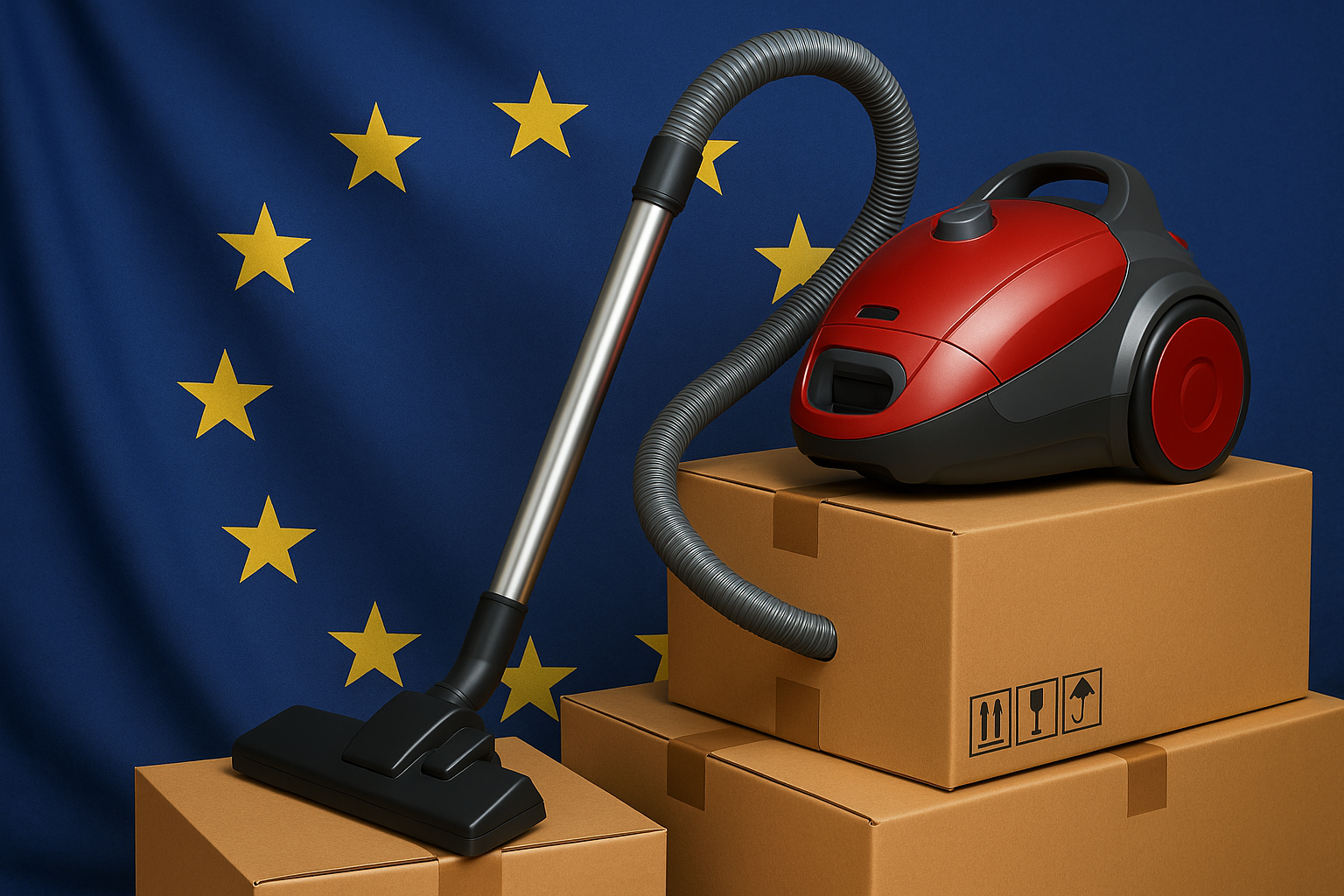Europe has long been one of the most stable and lucrative markets for vacuum cleaner exports. However, 2025 marks the beginning of significant regulatory transformations across the continent that will force manufacturers—particularly those exporting from Asia—to rethink compliance, documentation, and even product design.
The EU’s tightening standards under the EcoDesign Directive now place more stringent restrictions not just on energy consumption, but also on repairability, material recyclability, and digital product passports. While older rules focused mainly on limiting wattage, the new framework emphasizes lifecycle sustainability. This means exporters can no longer focus solely on powerful motors or compact design—they must now document how easily their vacuum cleaners can be disassembled, repaired, and disposed of in accordance with circular economy principles.
Additionally, the upcoming European Green Claims Directive aims to curb greenwashing by requiring manufacturers to substantiate every sustainability claim they make. Terms like “eco-friendly,” “energy-saving,” or “environmentally safe” must be supported by independently verifiable evidence. For exporters promoting quiet vacuum cleaner technology with energy-efficient claims, third-party lab validation and QR-coded proof are quickly becoming must-haves, not optional extras.
For factories relying on volume exports of generic models like cordless handheld vacuums or Cordless Vacuum Cleaner units, these changes could be disruptive. Many current models were developed under assumptions of wattage limits and simple CE compliance. Now, full transparency on materials, battery composition, noise emission, and carbon footprint per unit will be mandatory. The penalties for non-compliance? Entry bans, legal action, and loss of trust with major B2B buyers across the EU bloc.
One vital adaptation strategy is to rethink product lines holistically. For instance, the newest generation of export-ready units must integrate documentation-ready subcomponents and maintain databases for all relevant certifications. A standout example includes models tailored for the automotive sector—such as a Car Vacuum Cleaner with EU-certified noise levels, flame-retardant casings, and recyclable filters—suitable for mobile detailing services in France, Italy, and Germany.
And in terms of design narrative, language matters more than ever. A product that features high suction efficiency, portable yet rugged housing, ultra-quiet motorization, self-cleaning convenience, multi-functional utility, durable lifespan, fast deployment design, lightweight materials, energy-saving modules, optimized airflow performance, powerful vacuum dynamics, and large-capacity wet and dry containment systems can now be framed not just as a cleaning tool, but as a regulatory-compliant and future-proof vacuum cleaner.
The European Chemicals Agency (ECHA) has also begun enforcing stricter controls on chemicals used in plastics and adhesives, which affects all vacuum cleaner components from hoses to wheels. This means that every component—even seemingly trivial parts—must now be checked against REACH and RoHS standards. A failure to comply with just one part of the bill of materials could block the product from the entire EU market.
Another big shift? The rise of the Digital Product Passport initiative. Set to roll out fully by 2026, it will make product history traceable across borders—from raw material sourcing to end-user recycling. Brands and factories that begin investing in this infrastructure now will gain an export advantage and preferred status among distributors.
As a result, vacuum cleaner exporters who wish to maintain relevance and market access in Europe must not only upgrade engineering and documentation but also rethink how they pitch and structure their B2B offerings. Europe is no longer just a sales market—it’s becoming a regulatory proving ground.
For long-term success, prepare for compliance-driven differentiation. Learn more at www.lxvacuum.com.

















